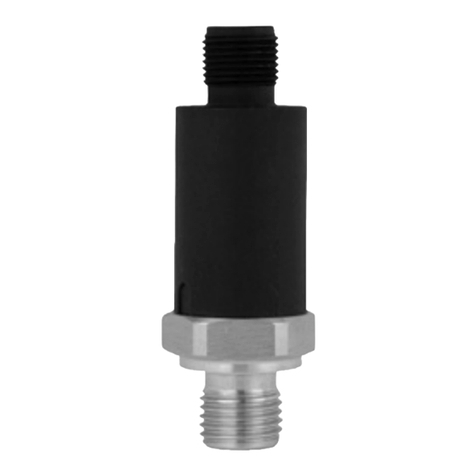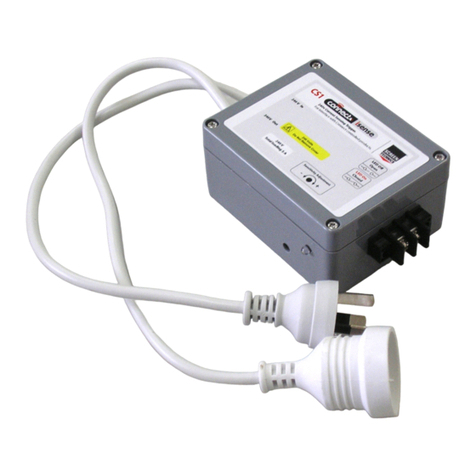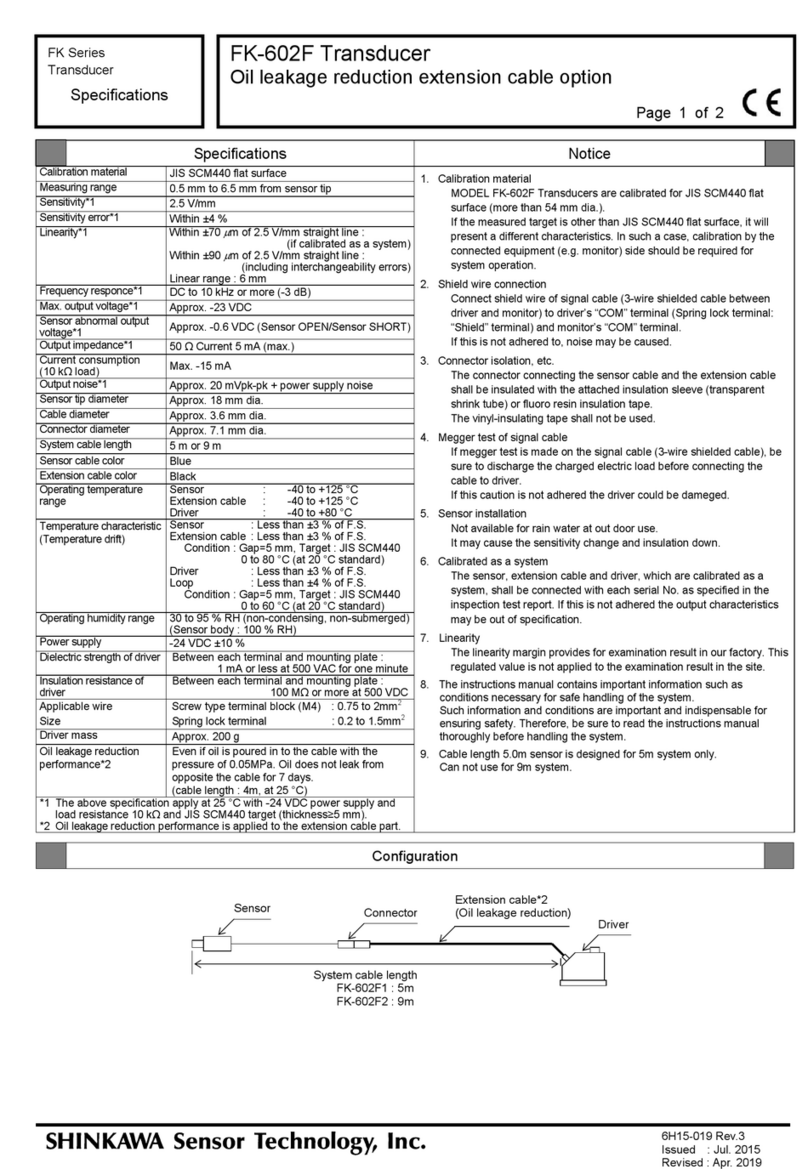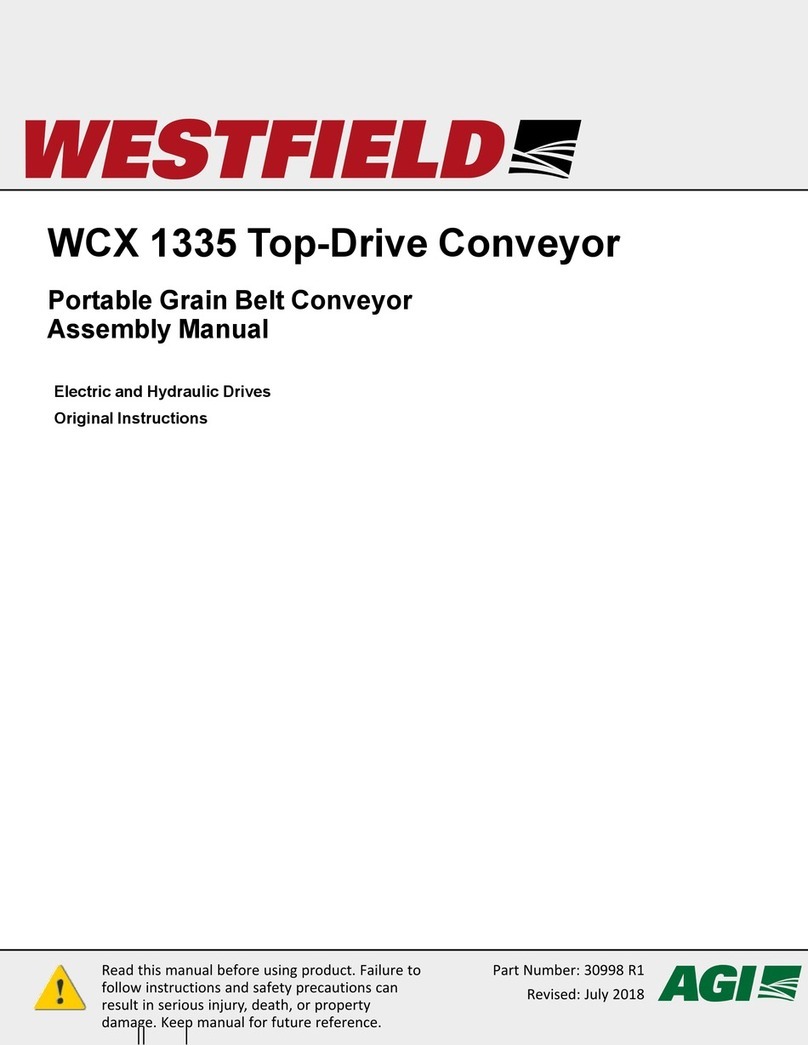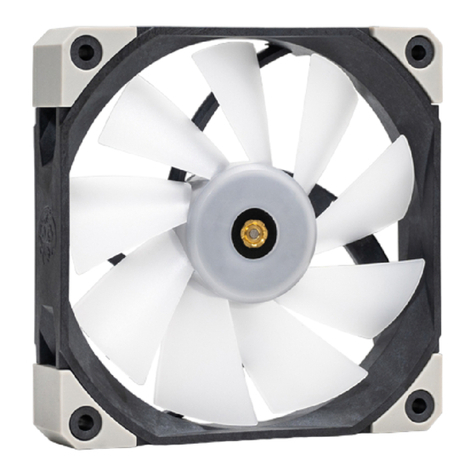TESA TESA-Rugosurf 20 User manual

1
Instruction Manual
TESA-Rugosurf 20
Compact Surface
Roughness Gauge
English

2

3
CONTENTS
1 Introduction 4
2 Safety precautions 4
3 General description 5
4 Elements on the top face 6
5 Elements on the rear face 6
6 Getting started 7
7 Main menu and submenus 7
8 Probe 9
9 Roughness measurement 10
9.1 Selecting the length and the number of cut-offs according to ISO 4287 11
9.2 Selecting the cut-offs according to ISO 12085 (CNOMO) 12
10 Menu and status bar 12
10.1 Probe position 13
10.2 Setting roughness parameters and tolerances 13
10.3 Storing the measured values in the memory 14
10.4 Calibration 14
10.5 Delayed measurement 15
10.6 Selecting the unit system and the standard 15
10.7 Selecting the language 16
10.8 Setting the clock 16
11 Measurement results 17
11.1 Displaying the measurement results 17
11.2 Specific result request using direct command 17
12 Charging and replacing the battery pack 18
13 Technical data 19
14 Delivery programme 20
15 Optional accessories 20
16 Recycling 21
17 Warranty 21
18 Declaration of conformity with confirmation of the traceability
of all indicated values 21

4
1 INTRODUCTION
You have purchased the compact TESA Rugo-
surf 20 and we thank you for your choice. To
help you to get the best performances from your
surface roughness gauge and to use it satisfac-
torily, we would advise to first read this manual
carefully.
To achieve reliable measurement results over a
long period of time, we would also recommend
to take all the precautions stated hereafter.
Your roughness gauge uses a cali-
brated stylus mounted at the probe
end. It is, therefore, advisable to
handle this unit with special care in
order to avoid shocks.
To keep it perfectly clean, use compressed air
under a pressure contained within 2 bars.
2 SAFETY PRECAUTIONS
– Make sure the indicated voltage matches that
of your mains supply.
– Do not attempt to dismantle the unit, except
for the parts listed in this manual. If you fail to
take this precaution, you might damage your
roughness gauge or cause a failure to occur.
– Do not subject the probe to stresses or
shocks. This sensitive component must be
handled with care.
– Do not use your roughness gauge in a dusty
environment, or have it exposed to vibrations.
Keep it away from appliances emitting noise
on the mains, such as air conditioners, trans-
formers or high-voltage relays.
– Do not use the gauge unit in places where
there may be excessive and sudden tempera-
ture variations. Do not leave it in a closed,
overheated room or exposed to direct sun-
light.
– Store your roughness gauge where tempera-
ture remains within -10°C to +50°C.
– Before you start measuring, remove any oil
spots or dust particles on the surface to be
inspected.
– Do not drop your roughness gauge. Avoid
shocks. Although solidly built, the measuring
system inside the unit may be damaged, thus
leading to incorrect measurement results.

5
3 GENERAL DESCRIPTION
Your TESA-Rugosurf 20 is a compact surface
roughness gauge that is very easy to handle and
to use. This microprocessor-controlled gauge
uses a graphical LC Display. It is powered by a
rechargeable battery, which provides a remark-
able operating independence. All menus and
messages can be displayed in the most usual
international languages.
This gauge consists of an electronic unit, a built-
in drive unit. It allows the main roughness pa-
rameters on the surface finish to be measured
with a resolution to the nanometre. Whether
held in the hand, or clamped to a stand, this
versatile tool can face any conditions of use.
In order to avoid vibrations that could alter the
measurement results, you may switch it on and
start the measurement through the remote con-
trol itself or TESA Rugosoft. These two compo-
nents are optional.
The measuring length will be automatically
set when choosing either of the three cut-offs
available. However, the length may be changed
by selecting the number of cut-offs contained
within 1 and 5.
Your roughness gauge prevents and displays
any incorrect handling or irregularities. The
memory lets you store more than 1000 rough-
ness parameters or 20 measurements along
with graphical representations, which can be
recalled and further printed out at any time.
The most common functions, such as summon-
ing up the measurement results or the cut-offs
besides starting the measurement operations
are directly accessible from the keyboard while
any other function linked to measurable param-
eters is available as an auxiliary function. This
makes your part series inspection easier.
All presettings and other data related to the last
measurements you have taken will be stored
in the memory as you turn off your Rugosurf
20. Used with battery power, it switches off
automatically whenever it is left unused for
1 minute.
Each digital output enables a direct connection
of the gauge unit to a host computer using a
Micro-USB standard cable available from the
range of optional accessories.
With the gauge connected to a computer,
you can output a user-defined 3-line header.
Through the appropriate software installed on
the computer, you will be able to download or
modify all settings, let the measured values be
transferred, display graphics or print detailed
reports.

6
4 ELEMENTS ON THE TOP FACE
Your roughness gauge can be entirely controlled
over the keys located on the right and the left of
the display screen.
Some keys are able to execute a function di-
rectly, while some others are used for selecting
the relevant menu or submenu that will let you
configure the gauge according to your needs.
The function of some keys will vary, depending
upon the conditions.
1START/STOP key
(starting/discontinuing a measurement).
2Graphical LC Display, black&white, 2 in.
3ENTER key (confirmation).
4Scroll key.
5Backward key.
Top face
5 ELEMENTS ON THE REAR FACE
1 2
3
4
1ON/OFF toggle switch used whenever the
gauge will be stored for a long period of time
(with ON directed to the right, if so).
2Mains connector for power supply.
3Micro-USB connector for data output.
4Printer connector.
Rear face
1 2
3
4
5

7
6 GETTING STARTED
Switching on your roughness gauge is done by
toggling the mains switch to the right, and then
pressing down the START/STOP key (1). The
Startup screen disappears a few seconds later.
The gauge unit is then ready to measure and the
results of the measurement lastly carried out are
displayed.
Display switches off automatically when-
ever the gauge is left unused for 60 seconds.
Pressing any key within this short while caus-
es this stand-by condition to increase for 60
additional seconds.
Any menu, submenu or function susceptible to
be directly triggered from the keyboard will not
be accessible unless the gauge is powered up.
Your Rugosurf 20 can also be turned on from
the Rugosoft software.
Note
Turning the toggle switch to OFF then back to
ON will enable you to restart your gauge unit.
If your roughness gauge is left unused for a
long time, we would highly recommend to use
the toggle switch to have it totally powered
down. This way of doing will contribute to pre-
serve the battery.
7 MAIN MENU AND SUBMENUS
Structure
Every menu and submenu lets you control every
operating function.
The main menu appears on the display screen
in the following conditions:
1Once the gauge has been turned on.
2When the
ENTER-key
is pressed down.
Available keys.
Confirming and accessing selected menu.
Moving the scroll key.
Getting back or quitting the menu.

8
Main menu and submenus

9
8 PROBE
Your Rugosurf 20 incorporates a translation
mechanism with the probe attached by means
of the height articulated probe-holder. In order
to swap the probe, simply pull it in its axis op-
posite to its displacement. For attachment, the
probe is just plugged in.
The measurements can be taken by lying down
the gauge unit on the surface to be checked.
But, you may also mount it on a support or use
its protection to rest it on the relevant surface.
Other supports can additionally be made avail-
able, rendering all measurement operations
easier.
When inspecting cylinders, use the auxiliary
supports that came with the roughness gauge.
Note
The probe comes with a built-in inductive meas-
uring system. Should this feature be swapped,
or important changes in the ambient conditions
occur, a calibration as described in chapter 10.4
will then be required.
For checking purposes, it is advisable to regu-
larly carry out a measurement on the standard
contained in the delivery scope.
Special parts or hard-to-reach locations can be
measured with the Rugosurf 20 clamped to the
standard support using the 8 mm diameter fix-
ing rod provided with the gauge. The latter will
be screwed into the convenient thread located
on the lower face of the gauge.
The two extra V-shaped supports allow for any
cylinder up to 80 mm in diameter to be meas-
ured. They will need to be attached on both front
and rear gauge faces.

10
9 ROUGHNESS MEASUREMENT
For a correct way of proceeding when measur-
ing the roughness of a surface finish, the follow-
ing items must be taken into account.
1Whenever possible, install your roughness
gauge on a rigid support, free from vibrations.
Carefully clean the surface to be measured. As
the measurement is being taken, don’t keep
the gauge in your hand, so as to prevent any
movement. If necessary, take several meas-
urements for comparison purposes. If one of
the measured values is significantly different
from all others, this means that the gauge
has been disturbed during the measurement
operation. The accessories supplied with the
gauge, i.e. the probe itself, probe cover and
raising items, make positioning easier.
2Press the key on the left side of the
display screen to power up your roughness
gauge.
3Select the value together with the number of
cut-offs you want to use for the measurement
(see in the table below).
4Position the probe in a such way that its axis
lies parallel to the surface to be measured, as
far as possible. Enabling the function Posi-
tion will let you check the probe position, es-
pecially in hard-to-reach locations.
5Press the key to start the measurement
cycle. You may also use the command avail-
able from Rugosoft (06930034). The drive
unit moves the probe along the surface to be
measured. The graph displayed during the
measurement shows the probe advance, so
that any noticed irregularity can be checked in
the course of the probing operation. On com-
pletion of data acquisition, display shows the
measured value for each parameter and the
drive unit moves the probe back to its start
position.
Pressing the key allows you to discon-
tinue the measurement at once.
Note
The ambient temperature, but also that of the
roughness gauge and the part to be measured
should be as identical as possible and within
the given operating temperature limit. The best
from your gauge is obtained at 20°C.
Possible settings for roughness measurement according to ISO 3274 on non-periodic surfaces
Ra (µm)
from up to and including Cut-off (mm) Lt(mm)
0,02 0,1 0,25 0,75 to 1,75
0,1 2 0,8 1,30 to 4,50
2 10 2,5 3,00 to 13,0
Ra (µin)
from up to and including Cut-off (in) Lt(in)
0.5 2.5 0.01 0.03 to 0.07
2.5 50 0.03 0.05 to 0.18
50 250 0.10 0.12 to 0.51
Relationship between the roughness and cut-off, in millimetre
Relationship between the roughness and cut-off, in inches

11
9.1 Selecting the length and the number of cut-offs according to ISO 4287
To access this option, press the key from
the results window, select the value over the key
and confirm via ENTER .
To confirm your selection and let you set the
number of cut-offs, press the key .
The total length is dependent on the selected cut-off.
Lt= (number of cut-offs + 1) x Lc
If this length is too important, you can change
it by reducing the number of cut-offs to be used
for the measurement.
Usually, 5 matches the selected number of cut-
offs. You may, however, choose another number
contained within 1 and 5.

12
9.2 Selecting the cut-offs according to ISO 12085 (CNOMO)
Once the standard ISO 12085 has been chosen,
the length of the measuring range, which does
no longer depend on the cut-off value, will be
directly selected.
To access this menu option, press the key
from the results window, select desired value
over the key
and confirm via ENTER .
Traverse length = 2,5 mm
10 MENU AND STATUS BAR
To access this menu, press the ENTER-key .
The status bar appearing on top of the display
screen summarizes all selected measuring con-
ditions in addition to the battery level and the
number of measurements saved in the memory,
if enabled.

13
10.1 Probe position
This menu option allows you to check the cor-
rect probe position against the surface to be
inspected. Its use is helpful in the two following
cases:
1When measuring grooves or bores.
As display shows the probe displacement, its
position can be set according to the meas-
uring range. If necessary, this menu option
assures you that the probe keeps on contact-
ing the surface being checked, otherwise the
measurement will be interrupted.
2When measuring critical surfaces.
In a such case, this option serves to the cor-
rect positioning of the probe on concave or
convex surfaces.
To access this menu option, select Position,
and then confirm via ENTER .
10.2 Setting roughness parameters and tolerances
Press the key
to select desired roughness
parameter in the list.
Confirm via ENTER .
Each parameter can be enabled or disabled,
depending on whether you want to have them
displayed or not.
A tolerance value may also be assigned to each
measured value.
Press the key
to choose the value you want
to modify, and then ENTER to set the cor-
rect value.
Keep on pressing the key
until setting of the
chosen value is completed.
Press the key to get back to upper menu.
All modifications will be automatically stored in
the memory.
Proceed in the same way to select each rough-
ness parameter you want to view and to set the
appropriate tolerance values.

14
10.3 Storing the measured values in the memory
Your Rugosurf 20 allows you to store more than
1000 measured roughness parameters or 20
measured values with graphical representation.
A navigation through the submenu Files
allows you to activate the memory. Once this is
done, confirm the menu option Enable via EN-
TER to enable/disable the Memory function.
Finally, press the key to get back to the main
menu.
The status bar tells you the number of measured
values stored in the memory, e.g. M:0.
Any stored value can either be cancelled by
selecting Delete or viewed over Show, or the
memory cleared by choosing Reset.
The option Save Profile let you define whether
the roughness parameters alone or together
with graphs must be stored in the memory.
The available space appears in percentage in the
submenu Files. If the memory is full, an error
message tells you that no other values can be
stored unless you clear the memory.
10.4 Calibration
It is advisable to check and calibrate your rough-
ness gauge regularly. The measured parameter
value Ra (or Rusing a specimen complying with
ISO 12085) must be close to the specified one.
The calibration process is based on the rough-
ness parameter Ra (or Rvalue for ISO 12085).
The reference value (specimen) will be set prior
to carrying out the measurement.
The measuring conditions along with the cut-off
and the number of cut-offs will be previously set
according to the indicated value on the specimen.
So, for example, defined cut-off length will match
0,8 mm and 5 for their number with a parameter
value Ra of 2,97 μm.
To access this menu option and calibrate your
roughness gauge, select Calibration and confirm
via ENTER .

15
Roughness parameter Ra on the specimen
Firstly, press the key
to select the digit you
want to change, then the ENTER-key
to
increase desired value. Once the value on the
specimen (e.g. 2,97 µm) is properly set, posi-
tion the probe stylus conveniently prior to run-
ning the calibration cycle. To have this cycle be
started up, move the scroll key
to the op-
tion Start measure, and then confirm via EN-
TER. The graph appearing on the display screen
shows the probe progression throughout the
calibration cycle.
Upon completion of the procedure, the cali-
bration is confirmed for a few seconds on the
display screen before getting you back to the
measurement results.
Note
The calibration procedure requires the unit sys-
tem previously selected in the Standard menu.
The measuring conditions must be set based on
the information provided on the setting stand-
ard. This is essential.
We recommend not to use the specimen longer
than necessary, so as to prevent its surface
from being scratched with the probe stylus,
thus leading to erroneous roughness values.
10.5 Delayed measurement
Selecting this option allows you to set a wait
between the request for measurement and the
measurement itself. Particularly useful when
measuring hard-to-reach locations, this option
replaces the remote control.
Move the key
to choose desired value in
seconds and confirm via ENTER
.
10.6 Selecting the unit system and the standard
To access this menu option, select Standard
and confirm via ENTER
.
Move the key
to chosen standard and con-
firm via ENTER
. The unit system can only
be selected under ISO 4287. To get back to the
main menu, press the key .
Note
Selecting ISO 12085 causes the metric unit sys-
tem to be automatically enabled because this
standard does not allow any measurement in
imperial units.

16
10.7 Selecting the language
To access this menu option, select Language
and confirm via ENTER
.Move the key
to
desired language and press the ENTER-key
to confirm your choice.
Finally, press the key to access back this
submenu.
10.8 Setting the clock
To access this submenu, select the option Time
and confirm via ENTER
.
Press the key
to select Year, Month, Day
or Hour you want to change. Press then the
ENTER-key
to increase the selected value
until desired one is displayed.
Confirm all changes via ENTER
while the
cursor is positioned on the Save option.
To get back to the main menu, press the key
.

17
11 MEASUREMENT RESULTS
The results are automatically displayed on com-
pletion of the measurement. While navigating
through the menu and submenus, press the key
to get back to the measurement results.
Pressing the key
lets you scroll through the
pages showing the results by parameter or by
graphs.
1Displayed parameters (according to relevant
standard and selected parameters).
2Displayed graph (roughness curve).
3Displayed Abbott curves (along with bearing
length).
11.2 Specific result request using direct command
List of commands:
?on? switch instrument permanently on
?off? switch off the instrument
?!? test to see if the instrument is on and if
communication is established properly.
ISO 4287
?ra?
?rq?
?rt?
?rz?
?rc?
?rmax?
?rsm?
?rpc?
ISO 12085
?pt?
?r?
?ar?
?rx?
?ppc?
It is possible to send a command to request a
specific parameter result in Hyperterminal or
equivalent software. The driver of Rugosurf 20
insrument should be installed (available upon
request to TESA)
11.1 Displaying the measurement results

18
12 CHARGING AND REPLACING THE BATTERY PACK
The level of the battery charge is viewable in the
top right corner of the display screen with the
battery symbol changing gradually from full to
empty. Should the battery be discharged, con-
nect your roughness gauge a soon as possible
to the charger supplied with the gauge.
Full recharging the battery pack takes at least
8 hours. The main switch must be in ON
position during the battery charging. There is no
recharging if the switch is in the OFF position.
Since the power supply unit incorporates a sys-
tem ensuring automatic regulation of the battery
charge, this unit can remain connected during
the measurement operations. Your roughness
gauge will continue to operate whilst the battery
is recharging.
Note
Do not leave the gauge unit unused for a long
period of time with discharged battery as it
could deteriorate. Check the charge level at least
every 30 days. Should the battery charge fall
below a given level, you won’t be able to switch
back the gauge. Do not replace the battery by
zinc-carbon or alkaline batteries as they might
blow up when attempting to recharge them, but
in any case be damaging to the battery if their
charge is low.
Whenever your gauge will be left unused and
stored over a long time, toggle the main switch
to OFF to disconnect the battery pack from the
electronics.
This procedure being similar to dismantling and
turning off the gauge, all preference settings
previously saved will be deleted.
The rechargeable battery can support a given
number of charge/discharge cycles before its
replacement by a new one from type NiMH, 8,4
V, 170 mAh, format PP3 (06960063) will be
necessary.
Procedure to access the battery pack:
– Remove the probe.
– Undo both socket head screws on the bot-
tom face of the gauge.
– Dismantle the upper case while paying a
special attention to the cables.
– Remove the battery pack from its location
and replace it by the new one.
Make sure both positive and negative
poles are not inverted.
Provided the replacement is made within a few
seconds, no data or setting value will be lost.
Otherwise each calibration value, header and
other significant data will be cancelled upon au-
tomatic resetting of the gauge.

19
13 TECHNICAL DATA
Measured roughness
parameters
Ra - Rq - Rt - Rz - Rc - RSm - Pt – Rmr - Pmr according
to ISO 4287:1997
RPc – PPc according to EN 10049
Rmax according to DIN 4768
R - Rx - AR according to ISO12085.
Measuring range (Z) Ra 0 to 100 µm, Rt 0,05 to 400 µm
Ra 0 to 3937 µinch, Rt 0 to 15748 µinch
Total length (X) (Number of cut-offs +1) × Lc
Traverse length (X) Number of cut-offs x Lc
Resolution 0,001 µm / 0,01 µinch
Cut-off length 0,25 - 0,8 - 2,5 mm / 0.01 - 0.03 - 0.1 inch
Electronic filter GAUSS filter to ISO 11562
Number of cut-offs 1 up to 5
Keyboard Four-key tactile keyboard protected against dust particles and
oil splashes IP67
Selectable languages Chinese, Dutch, English, French, German, Italian, Japanese,
Polish, Portuguese, Slovak, Spanish.
Display 2-inch LC Display, black and white, 160 x 160 pixels
Power supply Battery pack 8,4 V, 170 mAh or 100-240 V, 50/60 Hz for the
charger connected to the mains
Probing system Inductive
Diamond-like stylus R = 2 µm, 90°
Measuring force 0,75 mN according to ISO 3274
Precision ISO 3274, class 1
Displacement speed 0,5 – 1 mm/s (measuring and positioning)
Operating temperature range +10 to +40°C
Storage temperature range -10 to +50°C
Full battery recharging 8 hours
Inside memory >1000 roughness parameters or 20 measurements with
graphical representations
Battery life about 1000 measurements
Connectors Micro USB (PC)
Mass 122 x 60 x 62 mm (roughness gauge alone)
Weight 650 g
Packaging Suited plastic case
Origin UE

20
14 DELIVERY PROGRAMME
TESA Rugosurf 20 roughness gauge
(No. 06930013) supplied together with:
– SB 10 probe 06960081
– Mounted battery pack, 8,4 V 06960063
– Mains charger 06960046
– Setting standard, Ra=2.97um 06960041
– Adapter for 8 mm dia. support 056633
– Positioning support 057655
– Probe protection 057653
– Knurled screws (4 items) 056632
15 OPTIONAL ACCESSORIES
For a detailed list of the full range of available
accessories, report to the TESA general catalogue
or to the Product Info on the Rugosurf 20.
06960036 06960037
06960038 06960039
– USB cable to the PC : 04760099
– Rugosoft software : 06960034
– Rugosurf20 battery : 06960045
For surface, bore and shaft ø > 10 mm For groove < 5 mm depth
For small bore ø > 4 mm Vee-shaped skid for ø > 1 mm cylinder
Table of contents
Popular Accessories manuals by other brands
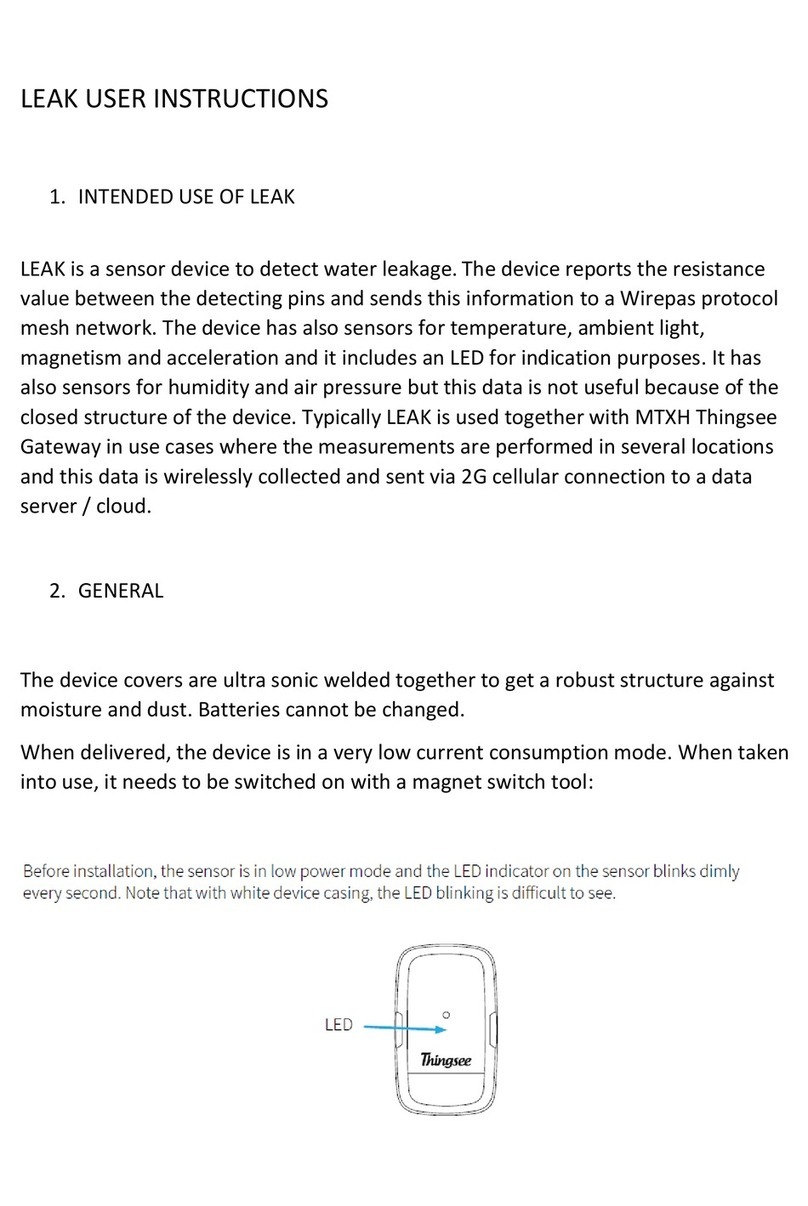
Haltian
Haltian Thingsee Leak User instructions
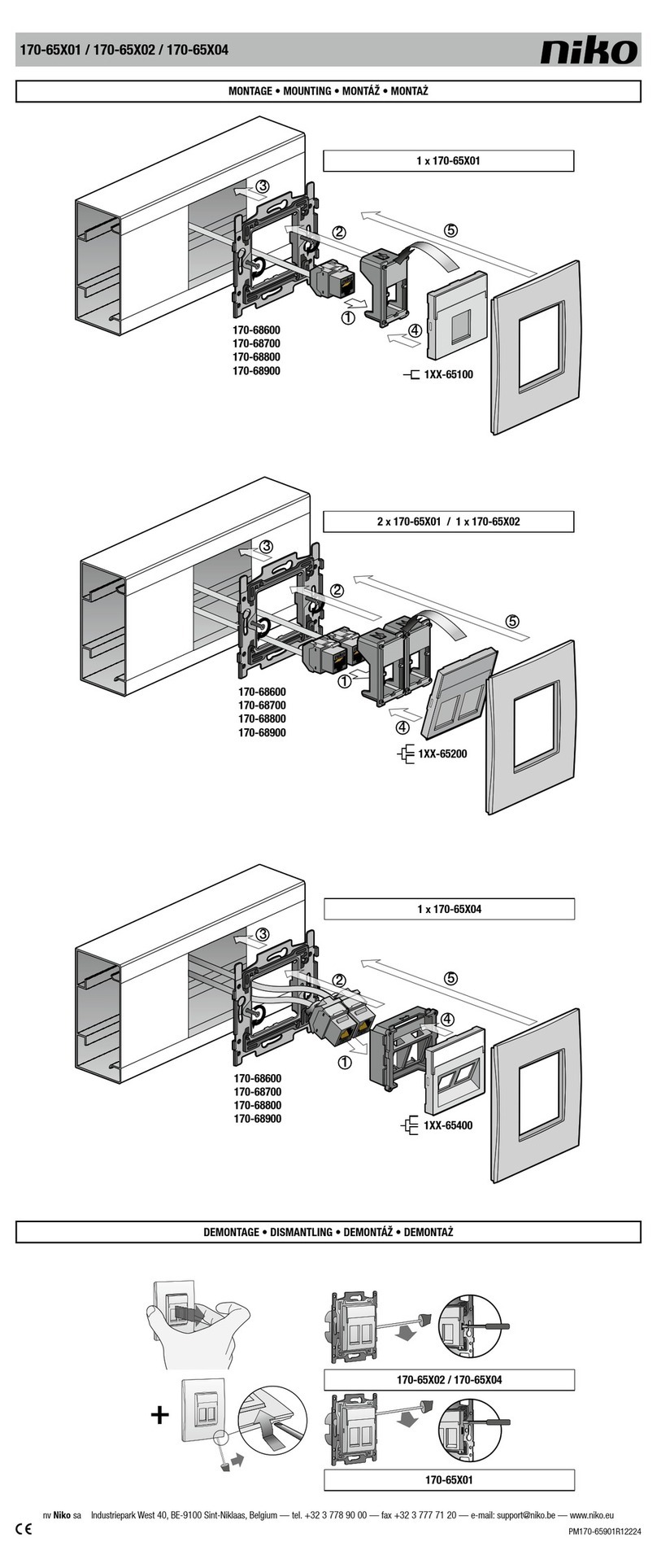
Niko
Niko 170-65 01 Series Mounting manual

Leuze electronic
Leuze electronic ODSL 30 Series Technical description / Software description

MS Sedco
MS Sedco DH400 installation instructions
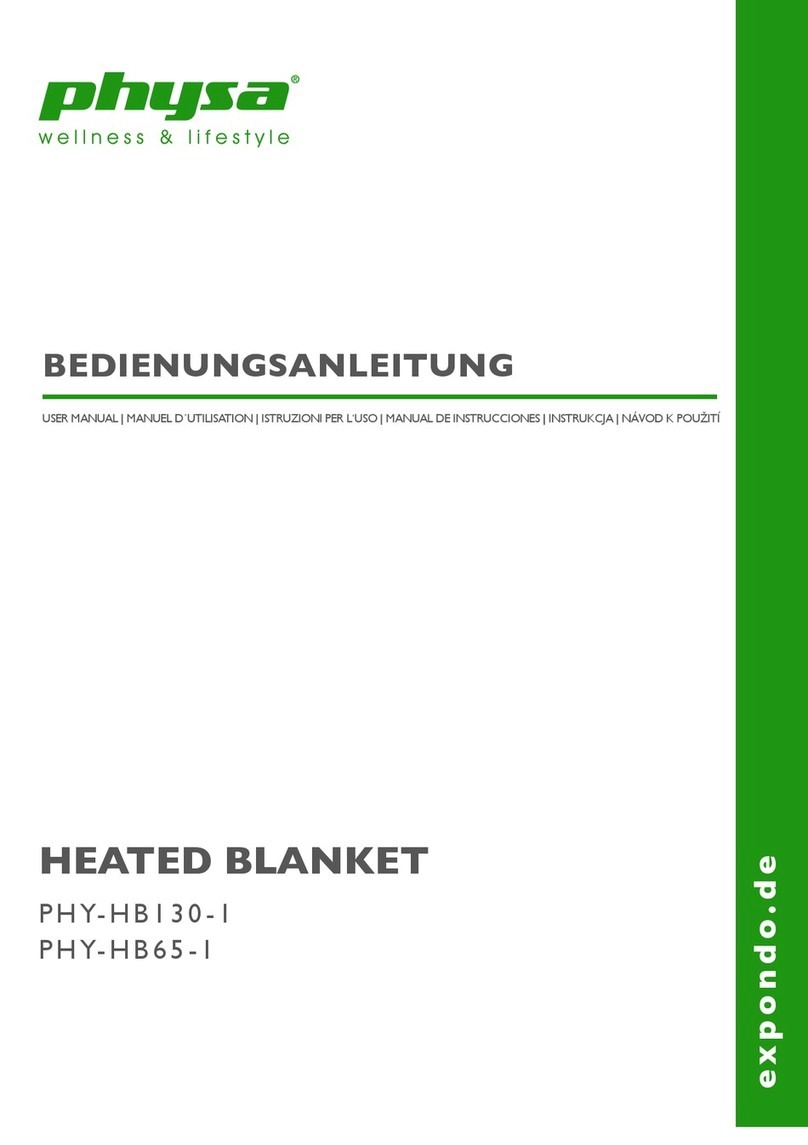
physa
physa PHY-HB130-1 user manual
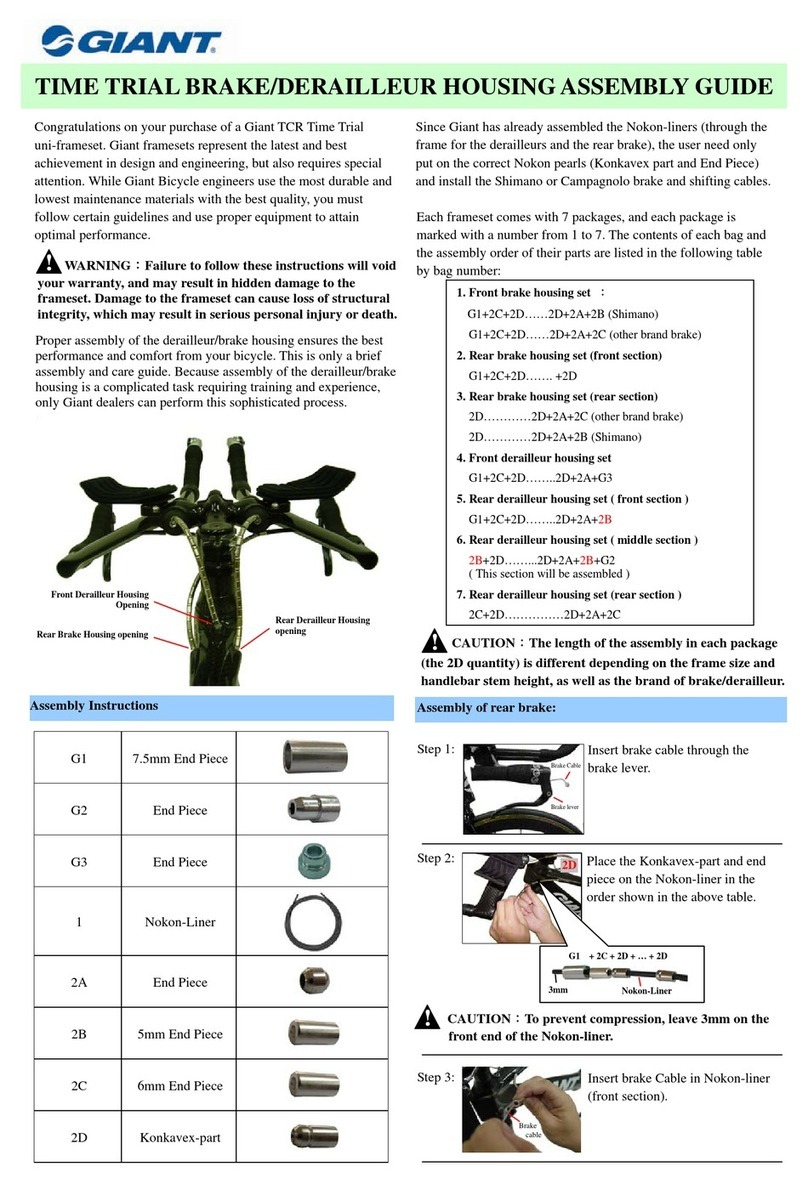
Giant
Giant TCR TIME TRIAL - ASSEMBLY Assembly instructions

Tait
Tait TB9100 Installation and operation manual
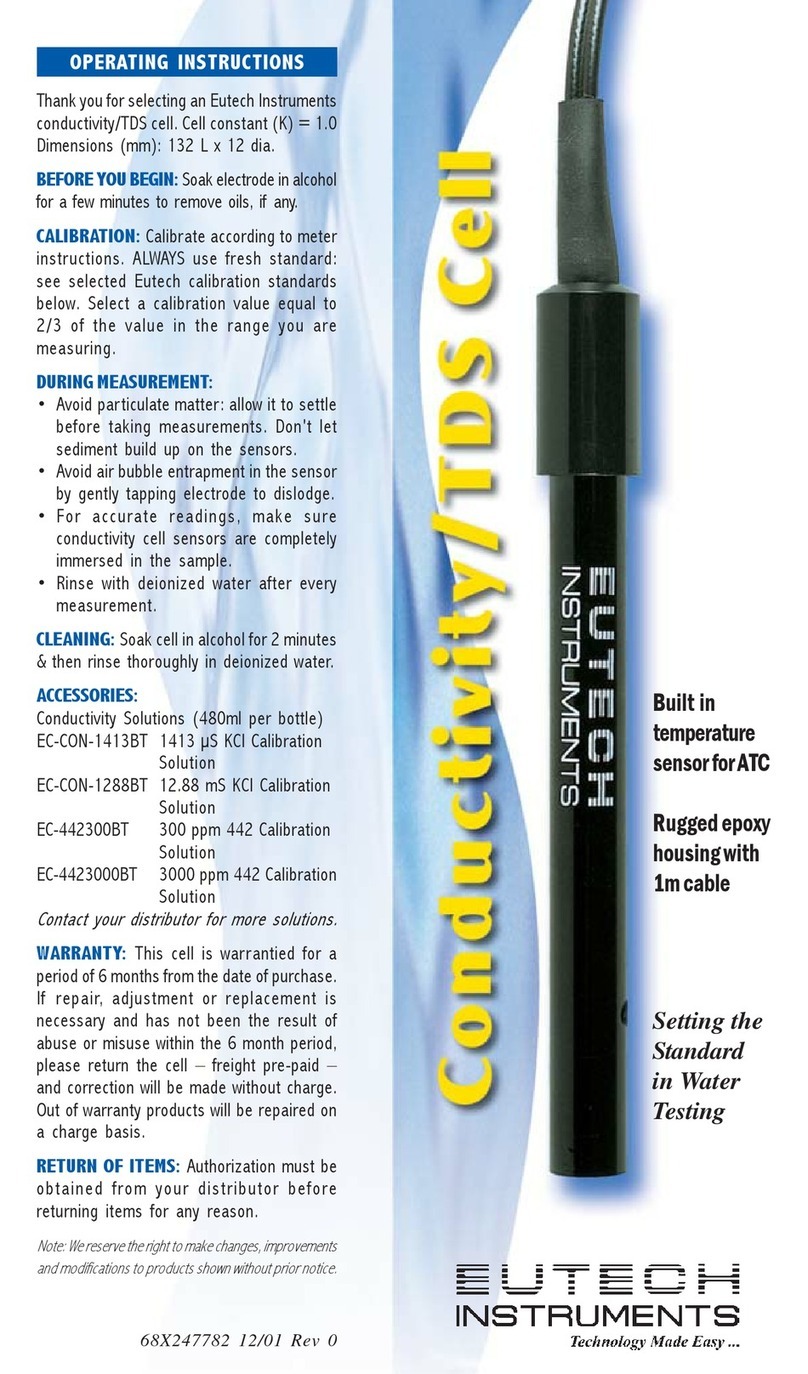
EUTECH INSTRUMENTS
EUTECH INSTRUMENTS CONDUCTIVITY ELECTRODE operating instructions
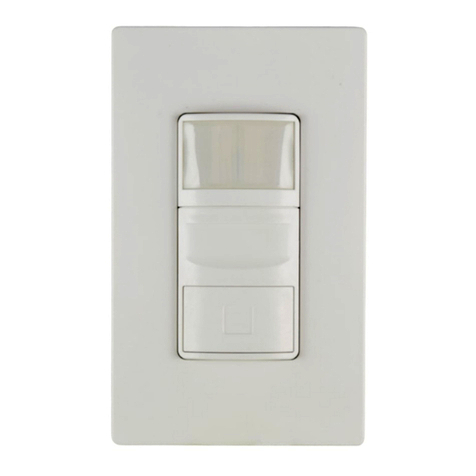
WallSenzr
WallSenzr LDS-700 Series installation instructions

Interlogix
Interlogix International ShatterPro Installation sheet

autosen
autosen AL004 operating instructions
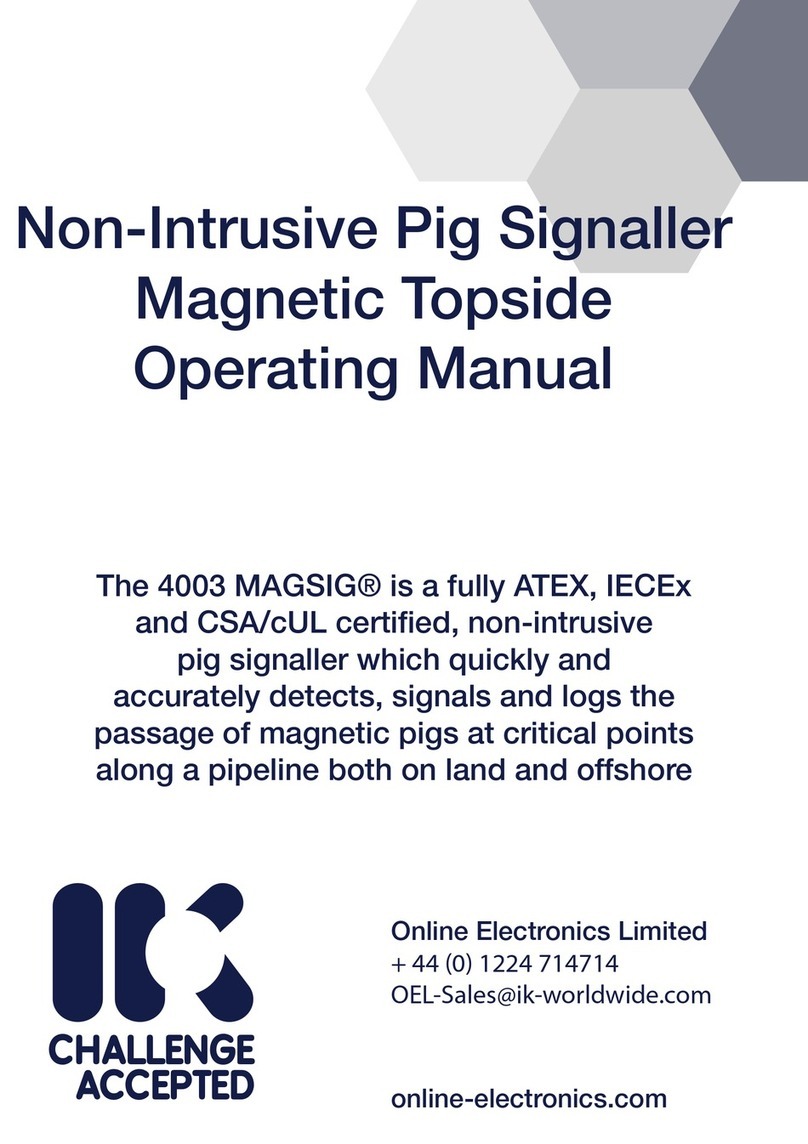
Online Electronics
Online Electronics 4003 MAGSIG operating manual
